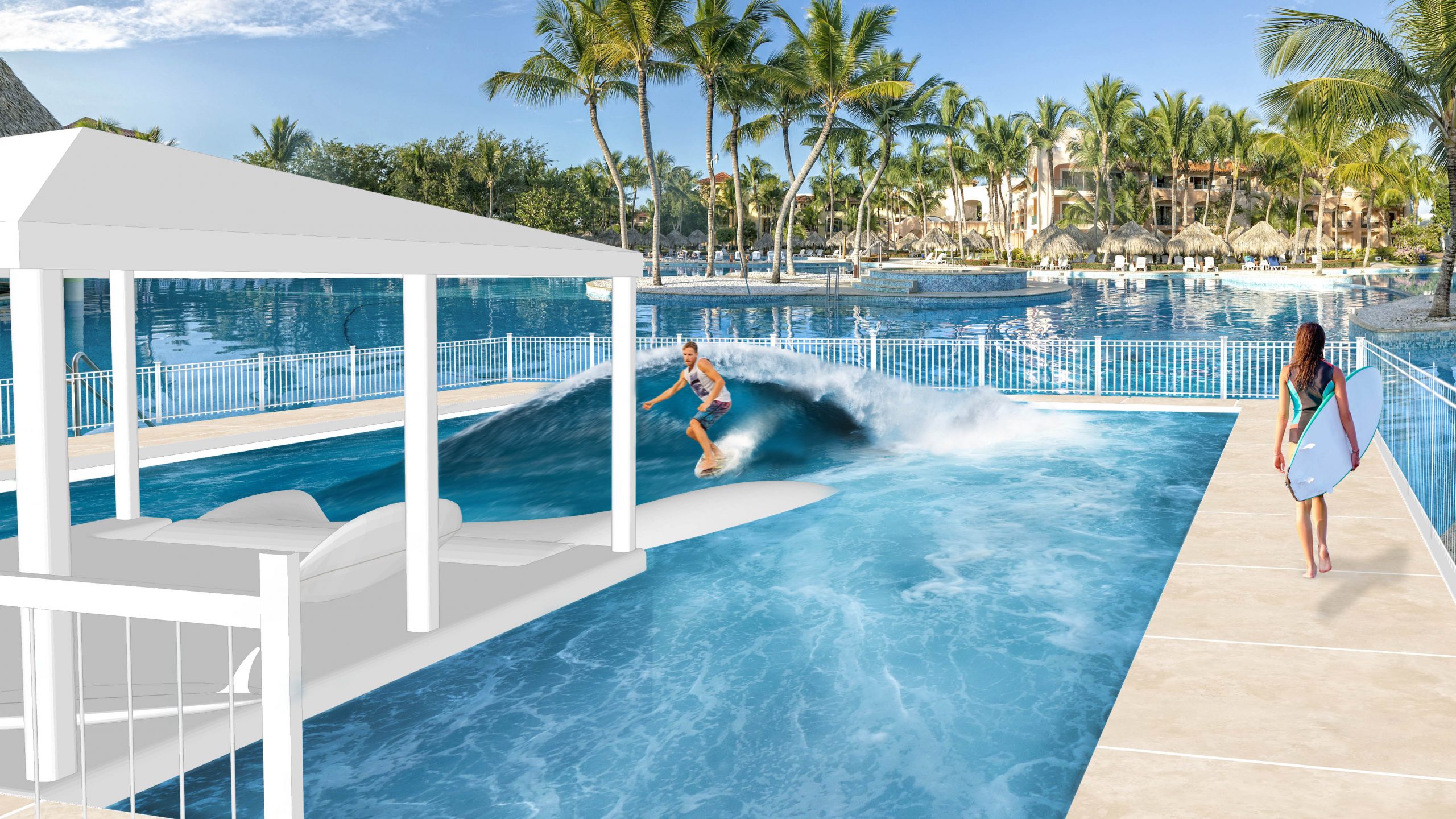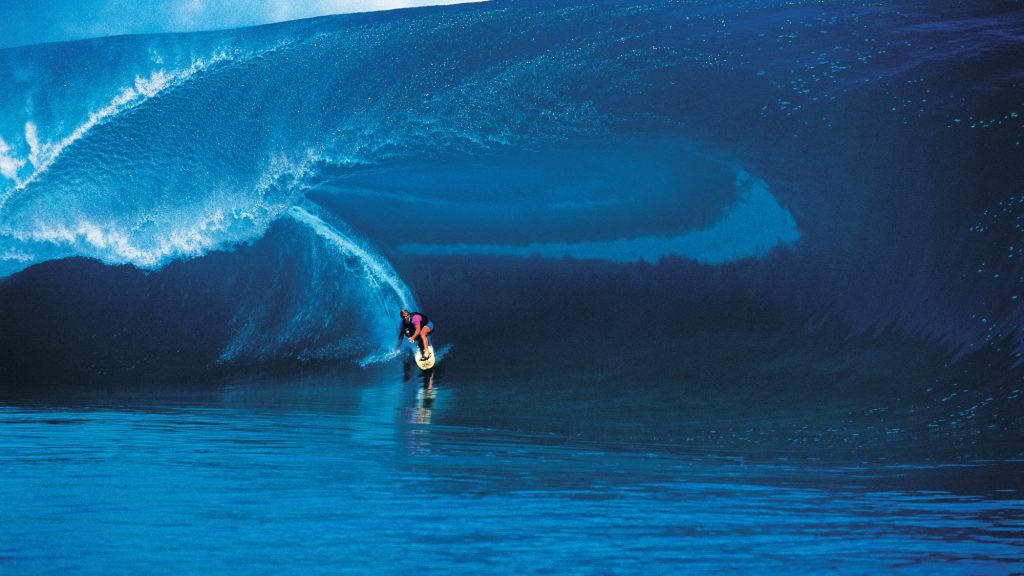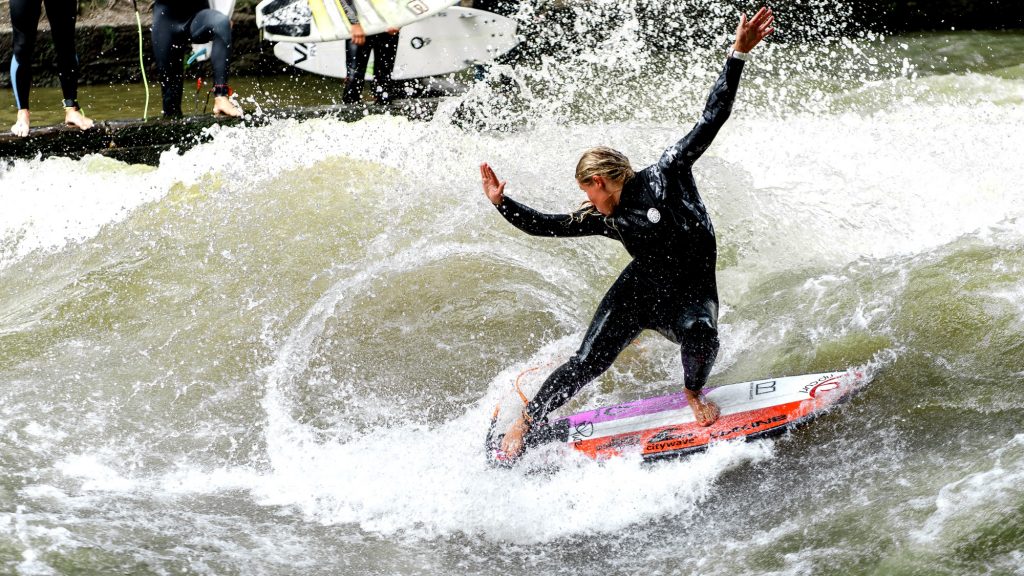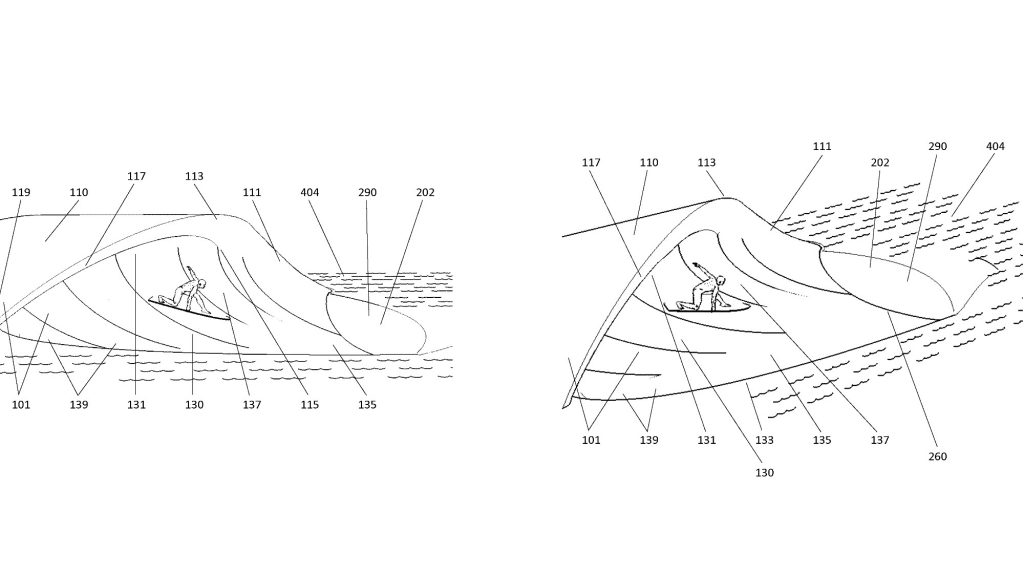New Technology: Where stationary and traveling waves meet

Yes, we certainly live in crazy times. From Kelly’s human-made wave debut at the close of 2015 to a plunger in the Australian scrub kicking out a utopian (or dystopian depending on who you talk to) surf-future, we all share an amazing time where creativity is melding with engineering guts. To add to the craziness, we recently discovered a portable, bathymetry-agnostic wave system inspired by a Peruvian drainage system. Impossible you say? As we write this, the Ka’ana Wave Co is building up its catalog of dynamic wave shapes and fine-tuning 3D-printed shaping heads in a research laboratory somewhere in Vancouver. Six months after the company validated the concept with an ultra-small pilot in the farmlands of British Columbia, we spoke with CEO Jamie Watson about a system that could revolutionize the wave pool space.
You’re coming online with something new in the space. So how would you categorize Ka’ana’s wave tech?
In the space right now, you have lagoon surf pools and stationary wave machines. Everything on the market fits into one category or the other. So where do we fit? We are stationary, but we are also deep water, and in a pool. We’re a “Stationary Wave Pool.” A new category. Add to that, we are also bathymetry-agnostic, which is new in the space.

What inspired the wave-making concept?
It didn’t happen overnight. I wanted to surf more, and for about four years I just thought about how cool it would be to be able to surf locally. In 2009, a few of us were in Aguas Calientes, Peru, and at night in a torrential downpour, I saw water barreling in one spot in this dogleg of a box drain. That image just stuck with me. Nothing like an “aha” moment, just an observation like, “Hey, that’s cool”. Then in the summer of 2012, I had an idea for a wave pool. I built a small model which, though I didn’t know it at the time, was like Greg Webber’s linear looped technology. The concept was good, but I couldn’t reconcile that at full scale and the pool would have been too big to install locally, so I abandoned it and walked away. A couple of months later my wife Sarah and I were in French Polynesia. I had brought a copy of Walter Isaacson’s Einstein biography and was caught by his thought experiments on relativity. With the thought of the box drain in Peru still on loop in my head, I closed my eyes and began to visualize water.
And how did it evolve from there?
Do you recall that iconic shot of Laird Hamilton riding Teahupo’o from 20 years ago? In the photograph, the wave is so big that there is no frame of reference. When you look at the picture, it’s nearly impossible to conclude that Laird is riding left vs standing in one spot with the flow traveling right. The line that his board cuts through the wave is the only indication of movement and it’s spiraling up and out behind him. This implies only that there is a relative direction of flow between Laird and the wave. That was the image in my head, and I could not with certainty, conclude that Laird was riding left. In the context of the shot, both Laird and the water were just relative.

Then thinking back to the box drain barrel and picturing a miniature surfboard dropping in on it, I imagined the line the board cut into the flow. That line was a spiral, just like Laird’s. Then I switched back to Laird. He’s stationary and his board is cutting a line through this continuous flow which is spiraling up and past him. The wave is barreling, but wait, there can’t be a reef because now the flow is coming from the direction of the reef. If there is no reef, there is no bathymetry. There’s no bottom. Now of course we know that Laird’s wave was a packet of energy traveling through the Pacific Ocean, that it slammed into a reef, and that Laird was riding left. But what if that wave was stationary? If it was, it was barreling without breaking on a reef. Hmmm…
But visualizing Laird at Teahupo’o and turning your neighborhood into a surf town are two very different things.
Agreed. So here I am, I have this colossal challenge to create a stationary, continuous, bathymetry- agnostic, deepwater wave. As I thought more, I could see even greater implications. If I could make surfing accessible to me, I could make surfing accessible to others. I could share the experience of surfing with those who didn’t, otherwise, have access. As for the surf industry, I began to see this wave idea as a catalyst that could ignite sustained, quality growth. I had this formula rolling around in my head that Increased Access = Increased Participation = Increased Quality Growth. Surf parks would make surfing accessible, which would increase participation, which would fuel growth.
It went further still, and I began to consider that if I could create a stationary wave in a small pool, such as an existing swimming pool, I could make surfing accessible for venues like hotels, resorts, waterparks, municipal recreation centers, mixed-use developments, and so on. Thousands of venues could benefit from the addition of surfing.
So how do you make Teahupo’o stand still.
In the case of Ka’ana’s CM7 technology the most promising concept was the one where waves were shaped by water passing through the active edges and surfaces of a passage, and through the subsequent discharge into, and interaction with, a water body. Picture a boat traveling through the water. The hull displaces a volume of the water body, which then collapses back in behind the boat. This is a wake. Now picture the boat in a fast-moving river and you’re standing on the riverbank. The boat is under-powered and not moving upstream, but instead, the flow is moving around the hull as it travels downstream. The river’s flow is still being displaced by the hull as it travels downstream, even though the boat is now stationary. The two are relative. So now we have a baseline for our concept: a boat wake that can be formed by a stationary hull, in a moving flow of water.

We can expand on this and make a hydraulic jump like found in a river. Think back to the wake. Let’s block the flows from collapsing back in from the sides. This leaves only the flow jumping back up from beneath the boat’s hull. Now imagine that the hull has a flat bottom. Without the side flows collapsing in, and with the hull’s flat bottom, the wake takes the form of a hydraulic jump. To illustrate we can look at the Waimea River wave. There are no side flows collapsing back in toward the center because the river has banks.
So now we have a stationary boat wake, and a hydraulic jump wave which we know can be stationary. Let’s jump back to Laird. How do we make Teahupo’o stand still? How do we make a barreling wave? We can take this stationary concept a step further and create right and left breaking barrels, but I’ll pause it right there with three wave types for our concept: a wake, a jump, and a barrel.
But that’s a boat in a river. Where’s the river going to come from?
Ha, good question! So we make the hull of the boat into a head which becomes both the boat’s hull and the river, and then we power the system with really big pumps. That’s the concept.

So, can you scale this up and it still works?
We asked ourselves the same question. Enter Ken Christison and Northwest Hydraulic Consultants here in North Vancouver. Ken’s a gem of a guy. When we met, I walked him through the math and showed him the model. We talked through the concept and Ken couldn’t see any reason why the concept wouldn’t scale, so we built out a plan to prove it. Initially, we ran CFD modeling to confirm the concept would scale up computationally. Then a physical model was built and tested at five times the model scale unit. This allowed us to check that the physical flow characteristics matched the calculated flow, which they did. Then, with these results confirmed, the last question remained. Could we surf this thing?
And you proved this system last summer?
We did! Obviously, with wave-making technologies, there are many challenges. By then, we had the data to support that the concept checked out, but this was such an abstract concept that we lacked certainty that it would be surf-able. So last July, for two weeks, we ran a pilot to validate the product on the smallest surf-able scale.
When can we see some footage?
We’ll present some of our wave shapes next month.
Thanks for your time Jamie. We look forward to seeing what your design can do.
Thank you, Bryan.
Related Coverage
